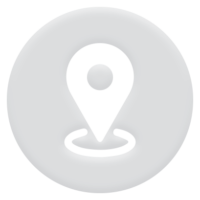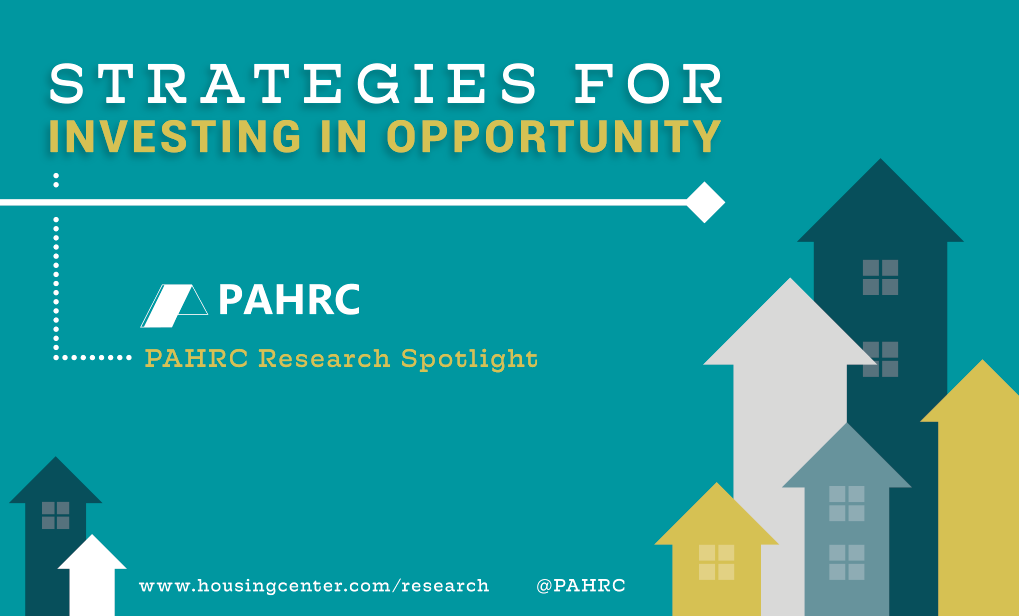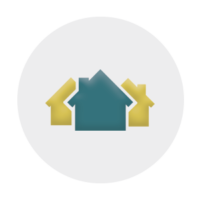Every community wants its residents to thrive, and it all begins with an affordable home.
The tools you’ll find here are intended to help housing providers, service providers, residents, policymakers, researchers, and community leaders increase affordable housing in areas of opportunity, and bring opportunity to neighborhoods that were previously cut off from investment.

Our Approach
We define opportunity as the potential for economic mobility and healthy living. To identify opportunity, we use measures that, based on current research, promote these outcomes; indicators linked to improvements in job prospects, health, education, and access to transit. We use the concept of opportunity capital to represent the scale of opportunities that may be unlocked by neighborhood residents to improve their well-being or economic mobility. The concept of ‘capital’ helps us view opportunity as a continuum and allows all neighborhoods to include opportunity.
Opportunity means outcomes. We rely on outcome-based indicators that contribute to economic mobility and healthy living where possible. For example, we selected indicators noting whether people are using available transit options to commute, rather than just the presence of transit options, which can help identify gaps in access.
Opportunity is where you live. We compare neighborhoods within greater metropolitan areas (core-based statistical areas, aka CBSAs) or non-metro areas in a given state. Most community leaders and many residents make location decisions within their current geographical area. It is important to be able to compare neighborhoods within a city for residents to make localized choices and community leaders to make decisions about how to prioritize resources.
Opportunity exists on a continuum. All neighborhoods have some level of opportunity. All neighborhoods can also increase opportunities and improve access. We measure neighborhood opportunity capital with a numerical score based on multiple indicators that contribute to economic mobility and health.
Different opportunities support different goals. While some neighborhoods may rank highly in one area of opportunity capital and low on another, other neighborhoods may demonstrate the opposite relationship. In this way, different neighborhoods provide opportunities to achieve different goals. For example, access to early education providers may be more important for families with pre-school age children than for those without young children.
Neighborhood Opportunity Search Tool
The maps below provide data on educational opportunity, job access, health outlook, and transit access as well as neighborhood desirability and neighborhood change. Click on the buttons to find out how your community measures up and how you can build opportunity capital across neighborhoods.
Making a Difference by Investing in Opportunity
Many communities are making a difference by building up their neighborhoods and providing residents with affordable housing in newly accessible neighborhoods. Use this map to explore the different investment pathways housing providers and community leaders might select to ensure that residents have more opportunities in their neighborhoods or to point residents to areas with high levels of opportunity capital.
Methodology // Request our data by contacting us here
Are you looking to improve affordable housing options for low-income families? PAHRC offers data-driven research consulting to housing providers, local governments, advocacy groups, and other housing-focused organizations to support your efforts.
Read our previous research to learn about the national story.

You are Not Working Alone
Tools
For more community indicators:
Opportunity360
For case studies and practitioner resources:
Opportunity Insights
Creating Moves to Opportunity
For creating a regional mobility strategy:
The US Partnership on Mobility from Poverty
For HUD resources on mobility:
HUD Mobility Demonstration
For investments via Opportunity Zones:
Urban Institutes Opportunity Zone Tools
HUD’s Opportunity Zone Tools
EIG’s Data and Activity Tracking
NCSHA’s Award Directory
For strategies on breaking down barriers to neighborhood
schools of opportunity:
HUD’s Breaking Down Barriers
For Freddie Mac properties:
Freddie Mac Opportunity Neighborhoods
For technical assistance with mobility policies:
Housing Mobility
Opportunity Research
Interested in MTO research/Impact of moving to
neighborhoods of opportunity:
Urban Institute’s MTO Insights
HUD Evaluation of MTO
Chetty et al. (2016)
Interested in impact of zip FMRs/expanding affordability
in higher cost neighborhoods:
Furman’s Zipcode FMRs and family choices
Stories
Hear from individuals for whom affordable housing and neighborhood
opportunity has made a difference:
National Housing Trust’s Voices Out Loud
Housing America’s Voices for Housing
ReThink Campaign’s Our Journey Home
Humans of HUD
Hear from housing providers and community leaders making a difference:
NAHRO’s Housers at Work
NCSHA’s Case Studies








